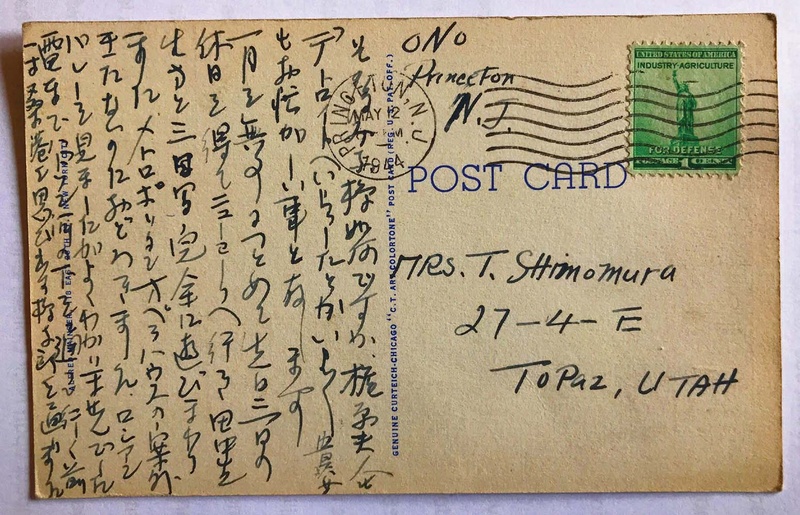A woman arrives at New York City after a long trip from Detroit. She writes to a distant friend about her long travels from home to Detroit and, finally, to New York City for the first time. The city was astonishing; vast city streets, landmarks abound, yet riddled with trash and squalor from a lack of upkeep. The Metropolitan Opera House offered a performance of the Ballet Russe, a wonder for someone visiting a cosmopolitan city for the first time. The most emotional experience, however, was riding a commuter train along the New York City skyline and watching the shining Hudson dance by. For her, it was reminiscent of her time before in San Francisco, which, only a few years before, seemed centuries ago. After observing all this, she inscribes these thoughts on a postcard taken from her hotel in New York City before mailing it back from her final destination of Princeton, New Jersey.
Without introducing the context of the subject, this letter might seem quaint. It could take place at any moment from the last century, and would be seem simply a charming anecdote.
The year, however, is 1944, and the woman is a Ms. Ono, who was traveling from the Topaz Relocation Center in Utah. The relocation center was one of ten concentration camps built to keep Japanese Americans behind barbed-wire for the duration of World War II without any due process. Three years before, her home was San Francisco; after Pearl Harbor, herself and thousands of others found themselves forcibly confined to camps in desolate locations with inadequate housing. For her – a student in her twenties – life was supposed to begin. Many like her would be given the chance to relocate to schools like Princeton so long as they weren’t on the West Coast. Writing to an older woman who helped many students like her, she is thankful for her help to escape and tells her the joys that came with being free.
What’s just as fascinating about this card is how it is written as much as what it is describing. When describing San Francisco, she refers to it by its traditional Japanese name, a name only known to the immigrant community as a reference point indicating arrival to the United States. Within a few short lines she is able to relive a time that seems as distant as the moon to today. The memories she engraved within the few inches of stationary not only preserve a lost part of the past, but uncovers an underlying trauma that came with being swept away from home. To the eyes of a regular observer, the lines “27 – 4 – E, Topaz, Utah” could represent another apartment. To the families confined at any camp, the three-figure code of numbers and letters was more haunting than enigmatic.
The few minutes along the Hudson river represent more than a sunset from May 1944; it was the twilight of an era for her and many others that came seeking a different life. Instead of finding a new innocence they were found guilty by others in their community for existing. Cards like these were printed in the thousands; only few carry powerful stories such as this.
Special thanks to Kumi Sato of Georgetown University for her help with this story.
* This article was originally published on NikkeiWest on February 10, 2020
© 2020 Jonathan van Harmelen / NikkeiWest






